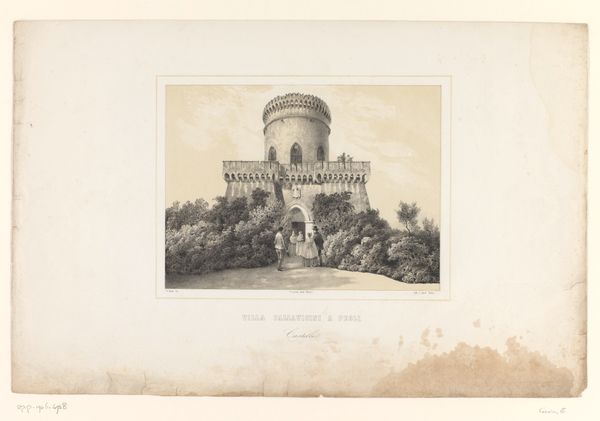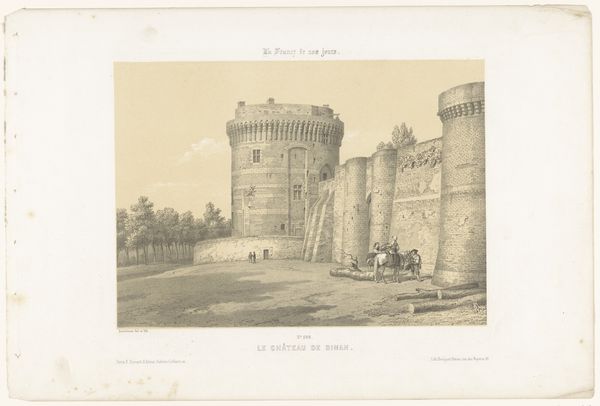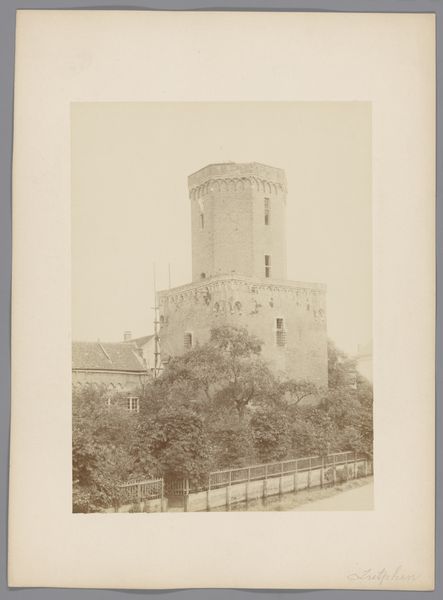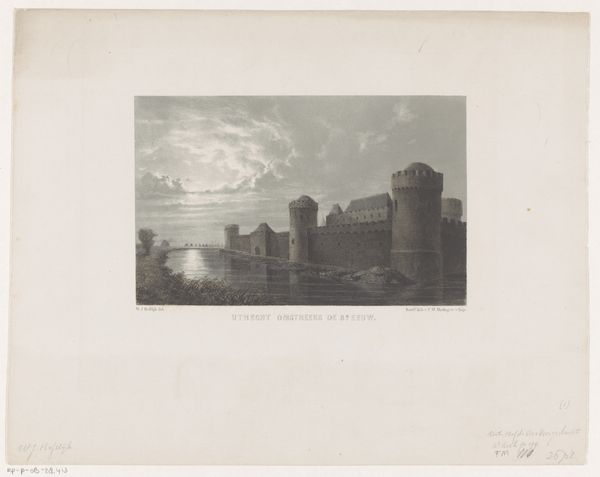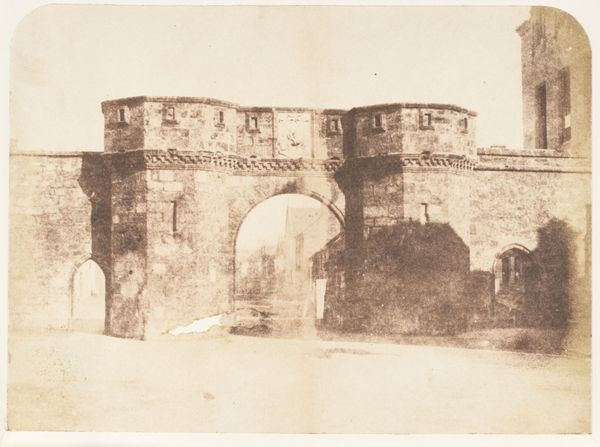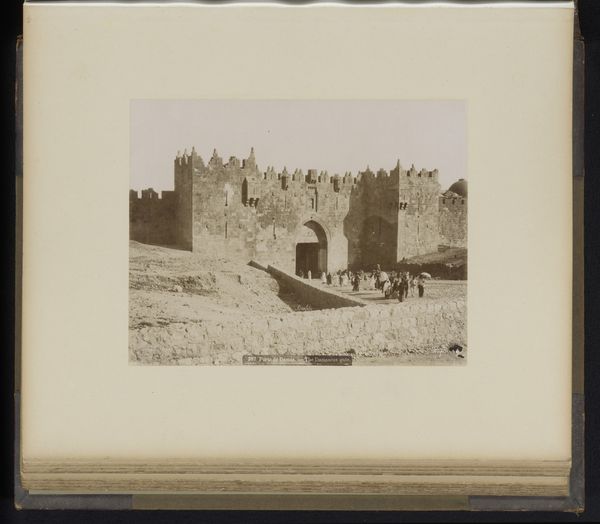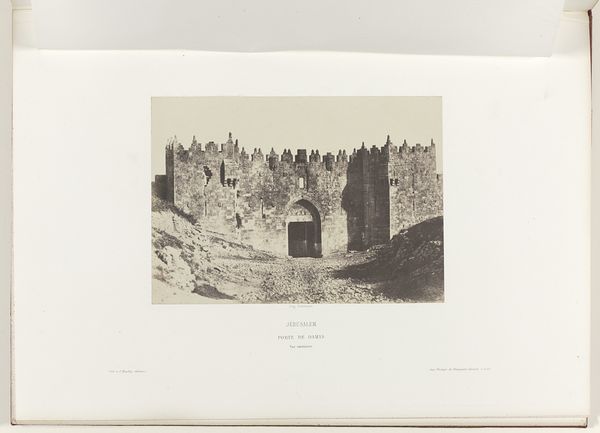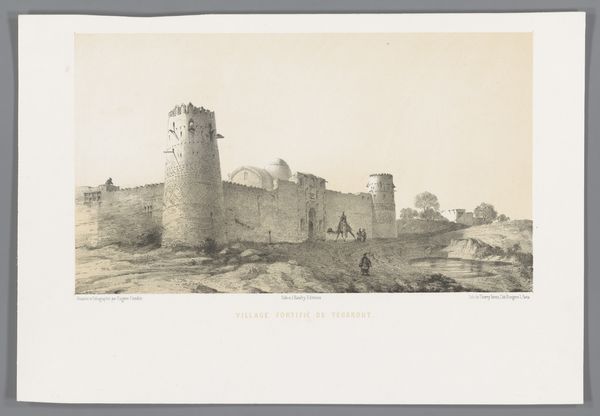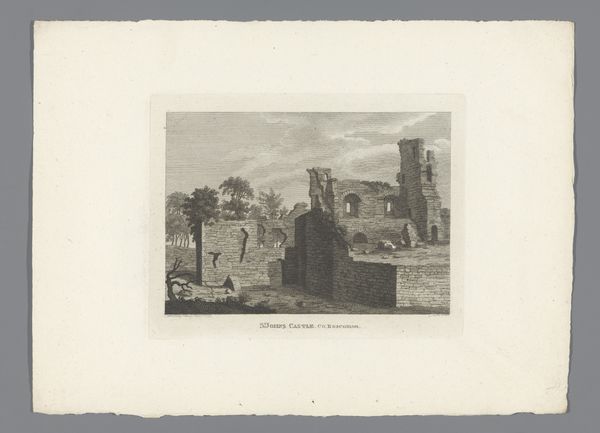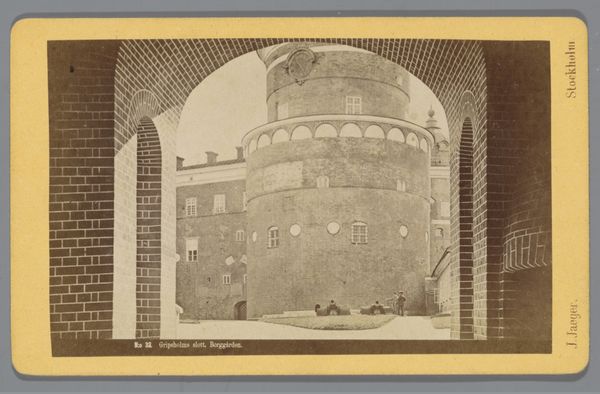
Tombe van Caecilia Metella aan de Via Appia nabij Rome, Italië 1857 - 1900
0:00
0:00
fratellialinari
Rijksmuseum
photography, albumen-print
#
landscape
#
photography
#
classicism
#
ancient-mediterranean
#
albumen-print
Dimensions: height 96 mm, width 141 mm, height 168 mm, width 224 mm
Copyright: Rijks Museum: Open Domain
Editor: This albumen print, captured by Fratelli Alinari between 1857 and 1900, portrays the Tomb of Caecilia Metella along the Via Appia near Rome. It evokes a sense of timeless grandeur, even in its somewhat faded state. How do you see this image within the context of its time and subject? Curator: It's interesting to consider this photograph as a document of cultural tourism in the late 19th century. The image flattens what would have been, for many, a pivotal cultural experience, allowing it to become a widely circulated commodity. Note the figures on the road, almost props that enhance the monument's scale, creating a vicarious thrill for the viewer. Why was this particular site so popular, do you think? Editor: Perhaps because it offered a direct connection to the ancient world, to Roman history? Something tangible from a glorious past? Curator: Exactly. And the act of photographing it democratized access to that past. However, it also shaped perceptions. These images helped codify how people "should" see the monument, freezing a particular interpretation in time. It subtly reinforces the dominance of a classical narrative and its influence on the construction of cultural identity. Editor: So, in a way, the photograph becomes another layer of interpretation added to an already historical site? Curator: Precisely. Consider who these images were for, and the narratives they reinforce about empire and legacy. It provokes a reflection on the power of visual media to shape collective memory. Editor: This really underscores the photograph's role beyond a mere record – it's an active participant in shaping historical understanding! Thank you! Curator: A crucial point. Reflecting on the interplay between art, historical perception, and the power of institutions helps to develop a more nuanced engagement with works like these.
Comments
No comments
Be the first to comment and join the conversation on the ultimate creative platform.
